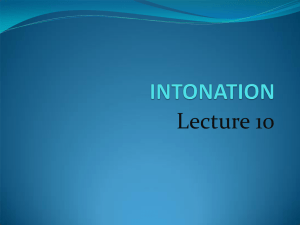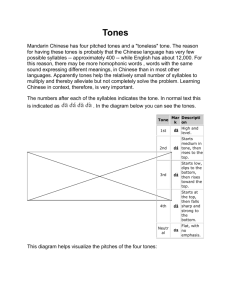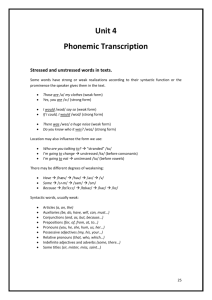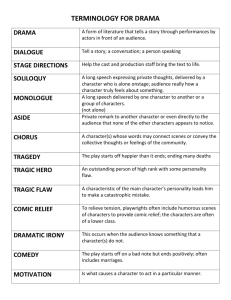Suprasegments of speech
advertisement
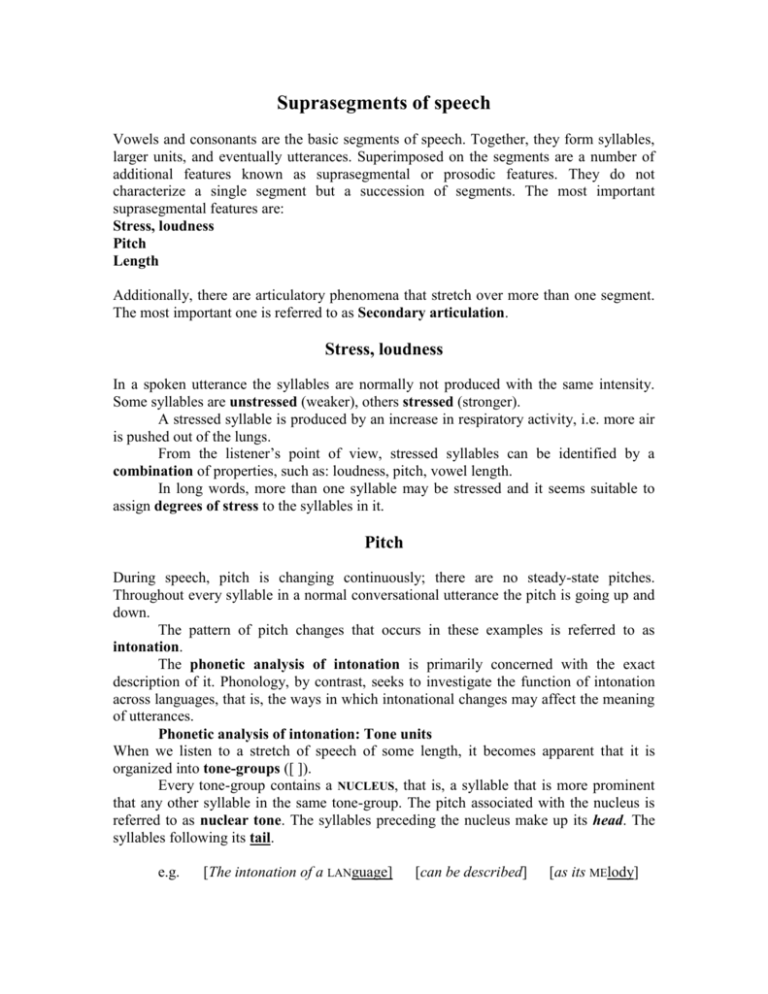
Suprasegments of speech Vowels and consonants are the basic segments of speech. Together, they form syllables, larger units, and eventually utterances. Superimposed on the segments are a number of additional features known as suprasegmental or prosodic features. They do not characterize a single segment but a succession of segments. The most important suprasegmental features are: Stress, loudness Pitch Length Additionally, there are articulatory phenomena that stretch over more than one segment. The most important one is referred to as Secondary articulation. Stress, loudness In a spoken utterance the syllables are normally not produced with the same intensity. Some syllables are unstressed (weaker), others stressed (stronger). A stressed syllable is produced by an increase in respiratory activity, i.e. more air is pushed out of the lungs. From the listener’s point of view, stressed syllables can be identified by a combination of properties, such as: loudness, pitch, vowel length. In long words, more than one syllable may be stressed and it seems suitable to assign degrees of stress to the syllables in it. Pitch During speech, pitch is changing continuously; there are no steady-state pitches. Throughout every syllable in a normal conversational utterance the pitch is going up and down. The pattern of pitch changes that occurs in these examples is referred to as intonation. The phonetic analysis of intonation is primarily concerned with the exact description of it. Phonology, by contrast, seeks to investigate the function of intonation across languages, that is, the ways in which intonational changes may affect the meaning of utterances. Phonetic analysis of intonation: Tone units When we listen to a stretch of speech of some length, it becomes apparent that it is organized into tone-groups ([ ]). Every tone-group contains a NUCLEUS, that is, a syllable that is more prominent that any other syllable in the same tone-group. The pitch associated with the nucleus is referred to as nuclear tone. The syllables preceding the nucleus make up its head. The syllables following its tail. e.g. [The intonation of a LANguage] [can be described] [as its MElody] In a large group of languages, the so-called tone languages, pitch operates on words to change their shape and alter their meaning. Tone languages: Pitch variations that affect the meaning of a word are called tones. A language that uses this technique is referred to as tone language. The simplest kind of tone language uses two possible tones, high and low. Such languages are called register tone languages (Bantu languages). More complex tone systems use contour tones, i.e. tones involving gliding movements (Vietnamese, Mandarin). e.g. ‘ma’ high level = ‘mother’ high rising = ‘hemp’ low falling = ‘horse’ high falling = ‘scold’ Length The length (physical counterpart = duration) of sounds, syllables, words, and utterances is variable and the variations are used for a variety of linguistic purpose. Vowel length is used to distinguish types of vowels in various languages. Depending on the position within utterances, syllable length may be varied to express certain attitudes. The changing of the overall tempo of utterances may increase or decrease their general character. Secondary articulation Secondary articulation is defined as an articulation with a lesser degree of closure occurring at the same time as another (primary) articulation. Generally, four types are considered: Palatalization: addition of a high front tongue position to another articulation Velarization: raising the back of the tongue during another articulation Pharyngealization: superimposition of a narrowing of the pharynx Labialization: addition of lip rounding




